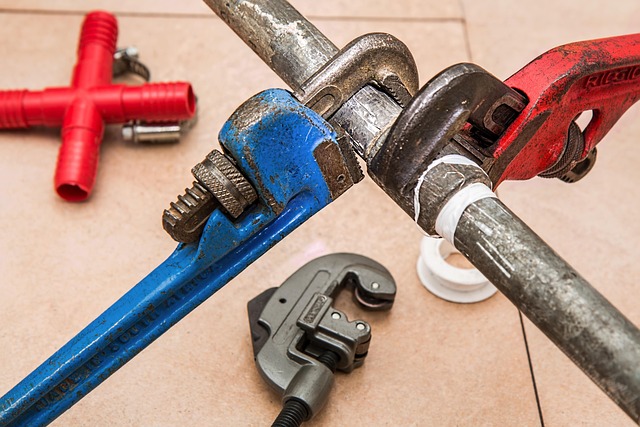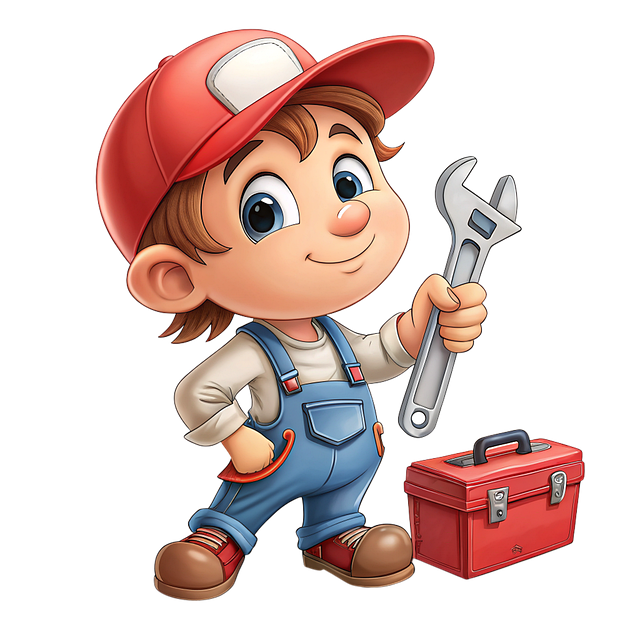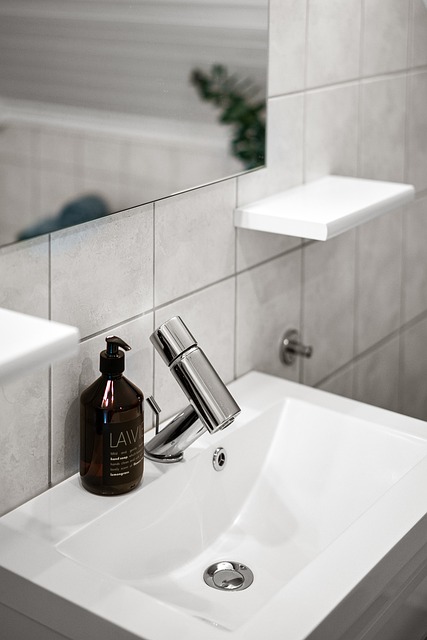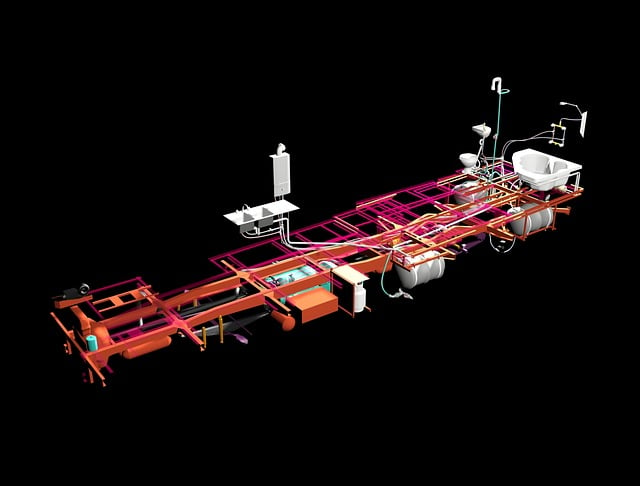Maintaining efficient bathroom plumbing involves regular checks for leaks, clogs, and issues with low water pressure. Prompt attention to problems like leaks, clogs, and toilet malfunctions saves money, prevents damage, and ensures a comfortable bathroom experience. Upgrading to modern, high-efficiency toilets reduces water bills and promotes environmental sustainability. Professional plumbers offer expert advice on repairs, replacements, and maintenance to keep your plumbing in top condition. Advanced technologies, smart fixtures, and eco-friendly practices enhance bathroom efficiency and safety while reducing long-term costs.
In every home, bathroom plumbing is a critical yet often overlooked aspect. From leaky faucets to clogged toilets, common bathroom issues can disrupt daily routines and lead to costly damage if left unattended. Understanding these problems and knowing when to call in a professional plumber is essential for maintaining a functional and efficient bathroom. This article delves into various aspects of bathroom plumbing, offering insights on diagnosis, repairs, upgrades, maintenance, and sustainable practices to ensure your plumbing stays in top shape.
Understanding Common Bathroom Plumbing Issues

Many common bathroom plumbing issues can be easily avoided with regular maintenance and prompt attention. One of the most frequent problems is clogged drains, which can range from slow-draining sinks to completely blocked toilets. These clogs are often caused by build-up of hair, soap scum, and other debris that accumulate over time. Another prevalent issue is low water pressure, resulting in weak or intermittent showers and faucets. This can be attributed to mineral buildup in pipes, aerator problems, or even faulty plumbing components.
Leaking faucets and toilets are also widespread bathroom plumbing concerns. Even small leaks can lead to significant water waste and increased utility bills over time. Identifying the source of these leaks is crucial, as they may originate from worn-out seals, damaged valves, or loose connections. Regular checks and immediate repair can prevent these issues from escalating and save you money in the long run. Understanding these common problems empowers homeowners to take proactive measures, ensuring a more comfortable and efficient bathroom experience.
The Role of a Professional Plumber in Toilet Repairs

When it comes to toilet repairs, a professional plumber is an indispensable asset for any homeowner. Their expertise in bathroom plumbing ensures that even the most complex issues are addressed efficiently and effectively. With their specialized knowledge, they can diagnose problems ranging from clogged drains and leaky faucets to more intricate toilet malfunctions.
A skilled plumber possesses the tools and training to fix or replace various components within your toilet system, including flappers, fill valves, and flush mechanisms. Prompt attention to bathroom plumbing issues is crucial to prevent larger, costlier problems down the line. Therefore, engaging a professional for toilet repairs guarantees not only lasting fixes but also saves time, money, and potential headaches in the long run.
Diagnosing Leaks and Their Causes

Leakage in your bathroom plumbing can be a common yet frustrating issue, often requiring prompt attention to avoid unnecessary water wastage and higher bills. Diagnosing the source is the first step in fixing any leak. Start by identifying where the water is seeping from—is it from under the sink, the toilet, or the shower? Each area has its potential causes: loose connections due to age or movement, faulty valves, damaged pipes, or even a problem with the appliance itself.
For instance, a leaking faucet might be as simple as a worn-out washer, while a shower leak could indicate a broken seal or a misaligned pipe. Toilets, known for their complex mechanisms, can leak due to issues with the fill valve, flapper, or even the bowl connections. Once the source is pinpointed, you can choose the right repair method—whether it’s replacing a part, resealing, or in severe cases, re-piping. Efficient bathroom plumbing services should be able to offer expert advice and solutions tailored to these specific issues.
Fixing Clogged Toilets: A Step-by-Step Guide

Dealing with a clogged toilet can be a common, yet frustrating, bathroom plumbing issue. Fortunately, fixing a clogged toilet doesn’t have to be difficult. Here’s a step-by-step guide to help you unclog your toilet efficiently. Start by preparing a few household items like a plunger (a toilet snake is ideal), a bucket, and some hot water. First, place the bucket under the toilet for drainage and then attach the plunger to the drain opening, ensuring a tight seal. Next, move the plunger up and down vigorously several times to create suction, which aims to break apart any obstructions in the pipes. If this initial attempt doesn’t work, pour the hot water into the bowl to flush out any remaining clogs.
For more stubborn clogs, repeat the process multiple times or try using a chemical drain cleaner as a last resort. Always remember that regular maintenance and prompt action can prevent severe toilet clogs. Keep your plumbing system in check by cleaning the drains regularly and disposing of non-biodegradable materials to ensure smooth bathroom plumbing operations.
Upgrading Old Toilet Systems for Better Efficiency

Upgrading old toilet systems is a smart move for any homeowner looking to enhance their bathroom plumbing efficiency and save on water costs. Older toilets often have low-flow or no-flow mechanisms, using as much as 3.5 gallons of water per flush compared to today’s high-efficiency models that use just 1.6 gallons or less. This simple upgrade can significantly reduce a home’s water consumption and lower utility bills.
Modern toilet systems are designed with advanced features like pressure-assisted technology, which improves flushing power while using less water. Additionally, smart toilets equipped with sensors and automatic flush mechanisms offer convenience and further water conservation. These innovations not only contribute to environmental sustainability but also provide homeowners with a more comfortable and efficient bathroom experience.
Important Considerations for Bathroom Remodels

When planning a bathroom remodel, considering the plumbing is paramount. A poorly planned renovation can lead to costly and inconvenient issues down the line. Key factors include assessing your existing plumbing layout, understanding water pressure and flow rates, and choosing fixtures compatible with your pipes.
Regularly check for leaks and ensure proper drainage are essential maintenance practices. Upgrading to energy-efficient fixtures and considering low-flow options not only saves on water bills but also aligns with modern sustainability trends. Remember, a well-designed bathroom plumbing system enhances functionality, ensures longevity, and contributes to a comfortable and efficient space.
Maintenance Tips to Prevent Plumbing Disruptions

Regular maintenance is key to keeping your bathroom plumbing in top condition and preventing disruptions. Start by checking for leaks around fixtures and pipes, as even small drips can lead to significant water waste and higher bills over time. Regularly inspect and clean drainpipes and traps to prevent clogs; these areas are often overlooked but can cause major backups if neglected.
Additionally, consider insulating exposed pipes during colder months to prevent freezing and potential burst pipes. Keep a close eye on the water pressure; excessive pressure can lead to leaks and damage. Lastly, don’t forget to flush your toilet regularly with a mixture of baking soda and vinegar to maintain optimal performance and avoid stubborn clogs.
Advanced Technologies in Modern Toilet Plumbing

In today’s digital era, advanced technologies have revolutionized bathroom plumbing services. From smart toilets equipped with temperature control, auto-flush mechanisms, and integrated bidets to sophisticated leak detection systems that use sensors and AI algorithms, modern plumbing offers unprecedented comfort and efficiency. These innovations not only enhance the user experience but also contribute to water conservation by reducing wastage.
Additionally, high-tech materials like corrosion-resistant PEX (cross-linked polyethylene) pipes and energy-efficient flushing systems have transformed traditional bathroom plumbing. These technologies ensure longer lifespans for plumbing fixtures and appliances, minimizing maintenance needs and costs. As a result, homeowners can enjoy updated, comfortable bathrooms while also benefitting from the environmental sustainability that comes with advanced bathroom plumbing solutions.
Ensuring Safe and Sustainable Bathroom Practices

In the realm of bathroom plumbing, ensuring safe and sustainable practices is paramount for both health and environmental reasons. One crucial aspect involves proper waste disposal and water conservation. Modern toilet systems are designed with efficient flushing mechanisms that reduce water usage without compromising cleanliness. Professional plumbers can install or upgrade these fixtures, promoting eco-friendly habits in your home. Additionally, regular maintenance checks can identify potential leaks, which not only save precious resources but also prevent costly damage to your property.
Safe bathroom practices also encompass the use of non-toxic cleaning products and proper ventilation. Well-ventilated spaces reduce moisture buildup, mitigating the risk of mold and mildew growth, common issues in humid bathrooms. Plumbers can install or service exhaust fans and other ventilation systems, creating a healthier environment. Furthermore, they can provide guidance on choosing durable materials that resist wear and tear, ensuring longevity and minimizing the need for frequent replacements.
